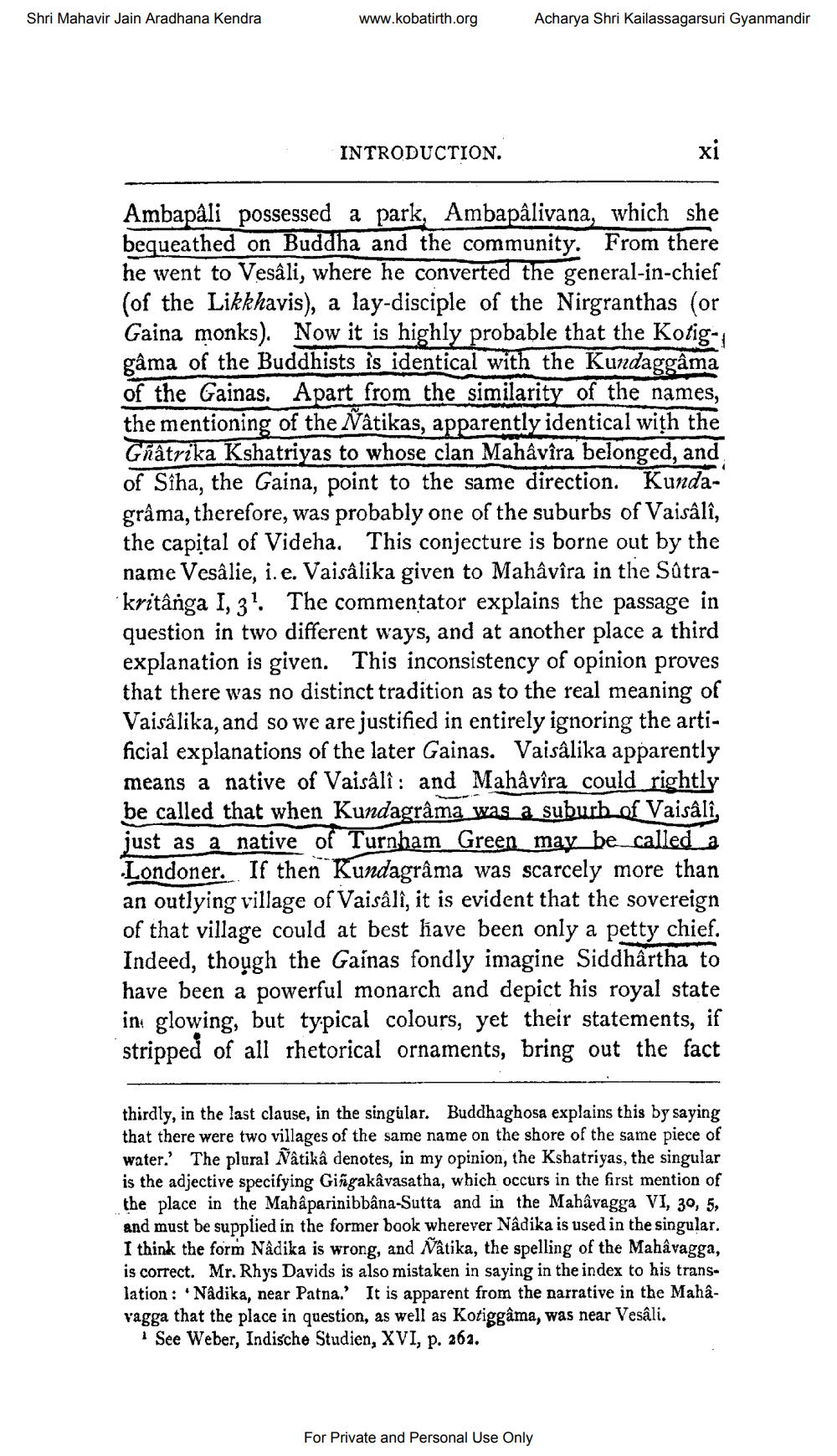Book Title: Gaina sutras Author(s): Hermann Jacobi Publisher: Clarendon Perss View full book textPage 7
________________ Shri Mahavir Jain Aradhana Kendra www.kobatirth.org Acharya Shri Kailassagarsuri Gyanmandir INTRODUCTION. Ambapali possessed a park, Ambapâlivana, which she bequeathed on Buddha and the community. From there he went to Vesali, where he converted the general-in-chief (of the Likkhavis), a lay-disciple of the Nirgranthas (or Gaina monks). Now it is highly probable that the Kotiggâma of the Buddhists is identical with the Kundaggâma of the Gainas. Apart from the similarity of the names, the mentioning of the Ñâtikas, apparently identical with the Grâtrika Kshatriyas to whose clan Mahavira belonged, and of Siha, the Gaina, point to the same direction. Kundagrâma, therefore, was probably one of the suburbs of Vaisâlî, the capital of Videha. This conjecture is borne out by the name Vesâlie, i.e. Vaisâlika given to Mahâvîra in the Satrakritânga I, 3? The commentator explains the passage in question in two different ways, and at another place a third explanation is given. This inconsistency of opinion proves that there was no distinct tradition as to the real meaning of Vaisâlika, and so we are justified in entirely ignoring the artificial explanations of the later Gainas. Vaisâlika apparently means a native of Vaisâlî : and Mahâvîra could rightly be called that when Kundagrâma was a suburb of Vaisâlî, just as a native of Turnham Green_may_be called a Londoner. If then Kundagrâma was scarcely more than an outlying village of Vaisâlî, it is evident that the sovereign of that village could at best have been only a petty chief. Indeed, though the Gainas fondly imagine Siddhârtha to have been a powerful monarch and depict his royal state in glowing, but typical colours, yet their statements, if stripped of all rhetorical ornaments, bring out the fact thirdly, in the last clause, in the singular. Buddhaghosa explains this by saying that there were two villages of the same name on the shore of the same piece of water. The plural Ñâtikâ denotes, in my opinion, the Kshatriyas, the singular is the adjective specifying Giñgakâvasatha, which occurs in the first mention of the place in the Mahaparinibbâna-Sutta and in the Mahâvagga VI, 30, 5, and must be supplied in the former book wherever Nâdika is used in the singular. I think the form Nâdika is wrong, and Natika, the spelling of the Mahâvagga, is correct. Mr. Rhys Davids is also mistaken in saying in the index to his translation : Nâdika, near Patna. It is apparent from the narrative in the Mahavagga that the place in question, as well as Kotiggâma, was near Vesâli. See Weber, Indische Studien, XVI, p. 262. For Private and Personal Use OnlyPage Navigation
1 ... 5 6 7 8 9 10 11 12 13 14 15 16 17 18 19 20 21 22 23 24 25 26 27 28 29 30 31 32 33 34 35 36 37 38 39 40 41 42 43 44 45 46 47 48 49 50 51 52 53 54 55 56 57 58 59 60 61 62 63 64 65 66 67 68 69 70 71 72 ... 385
